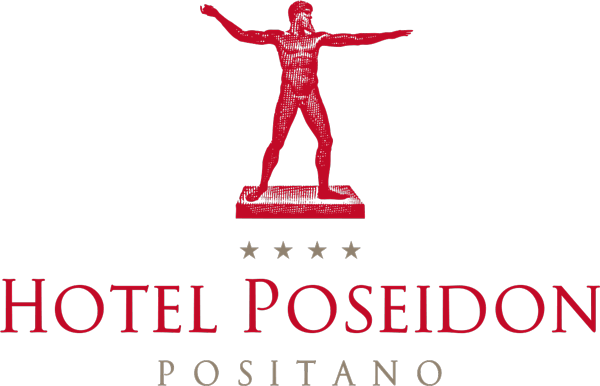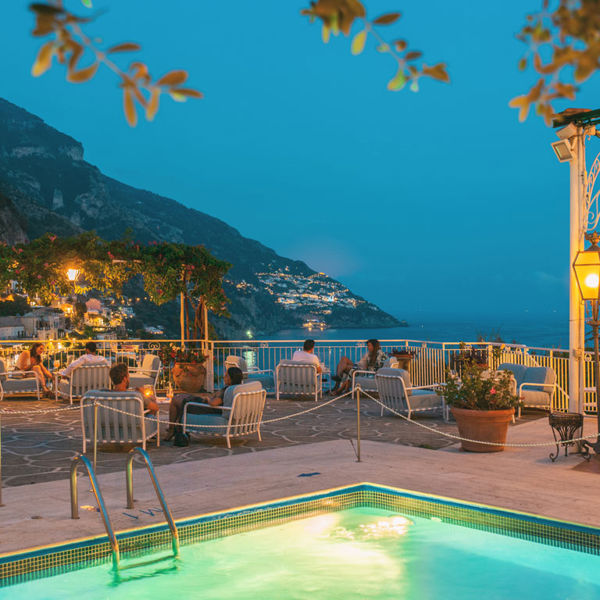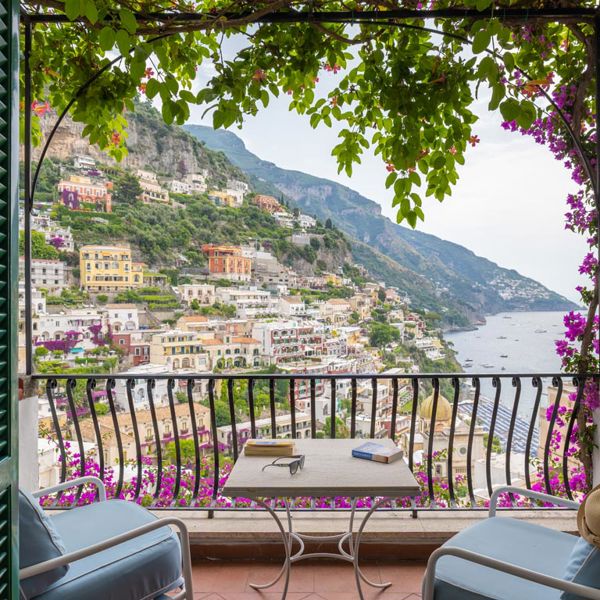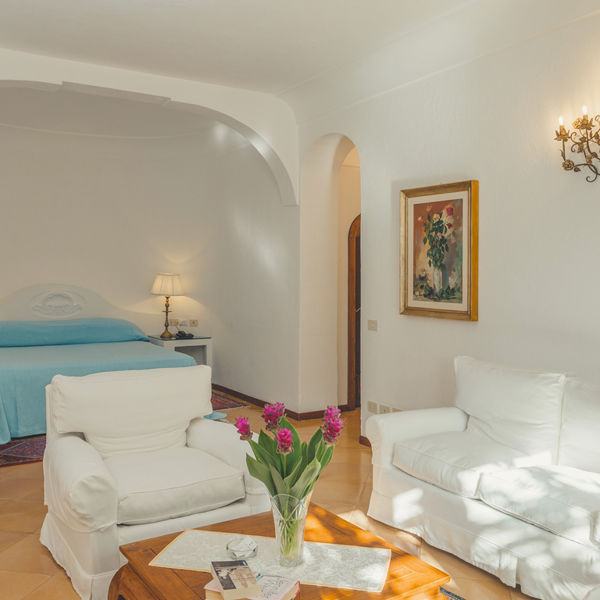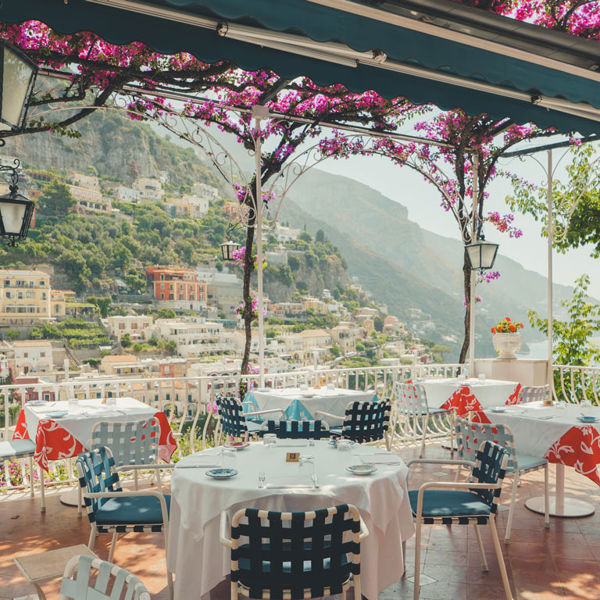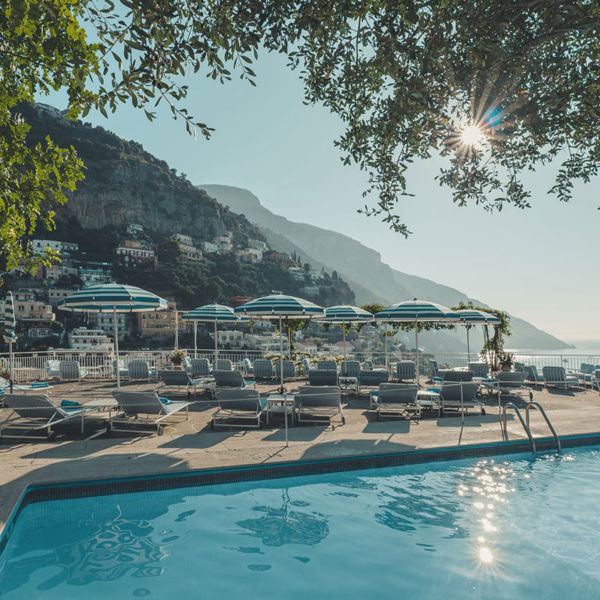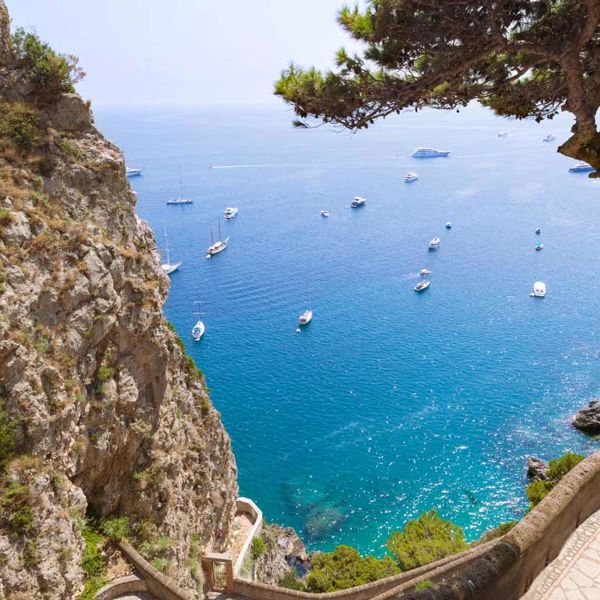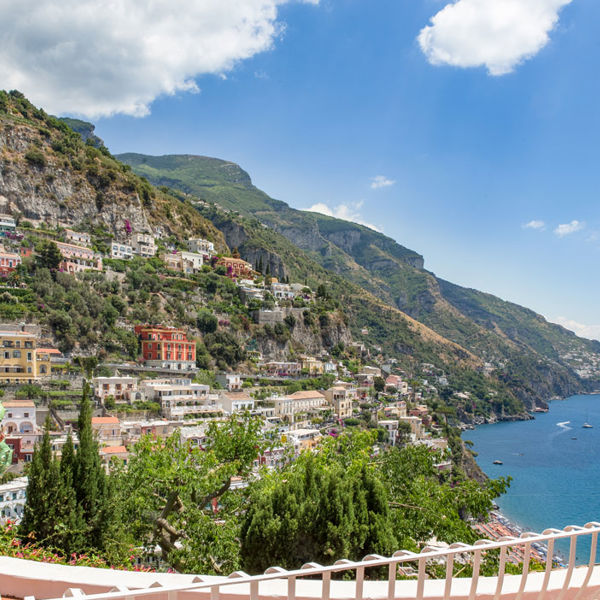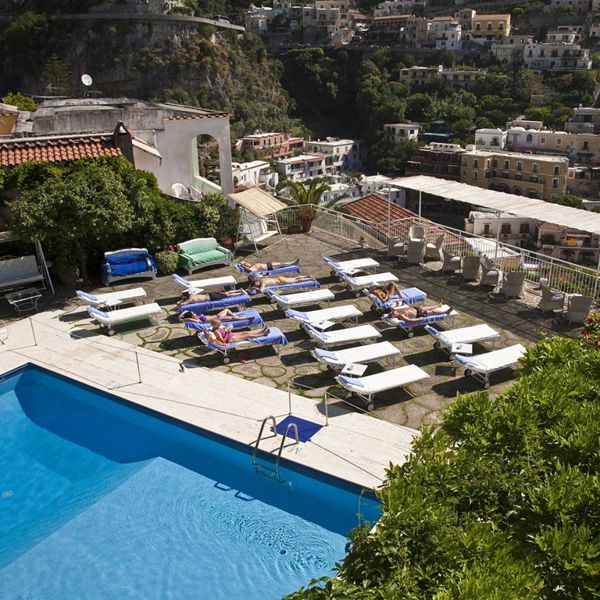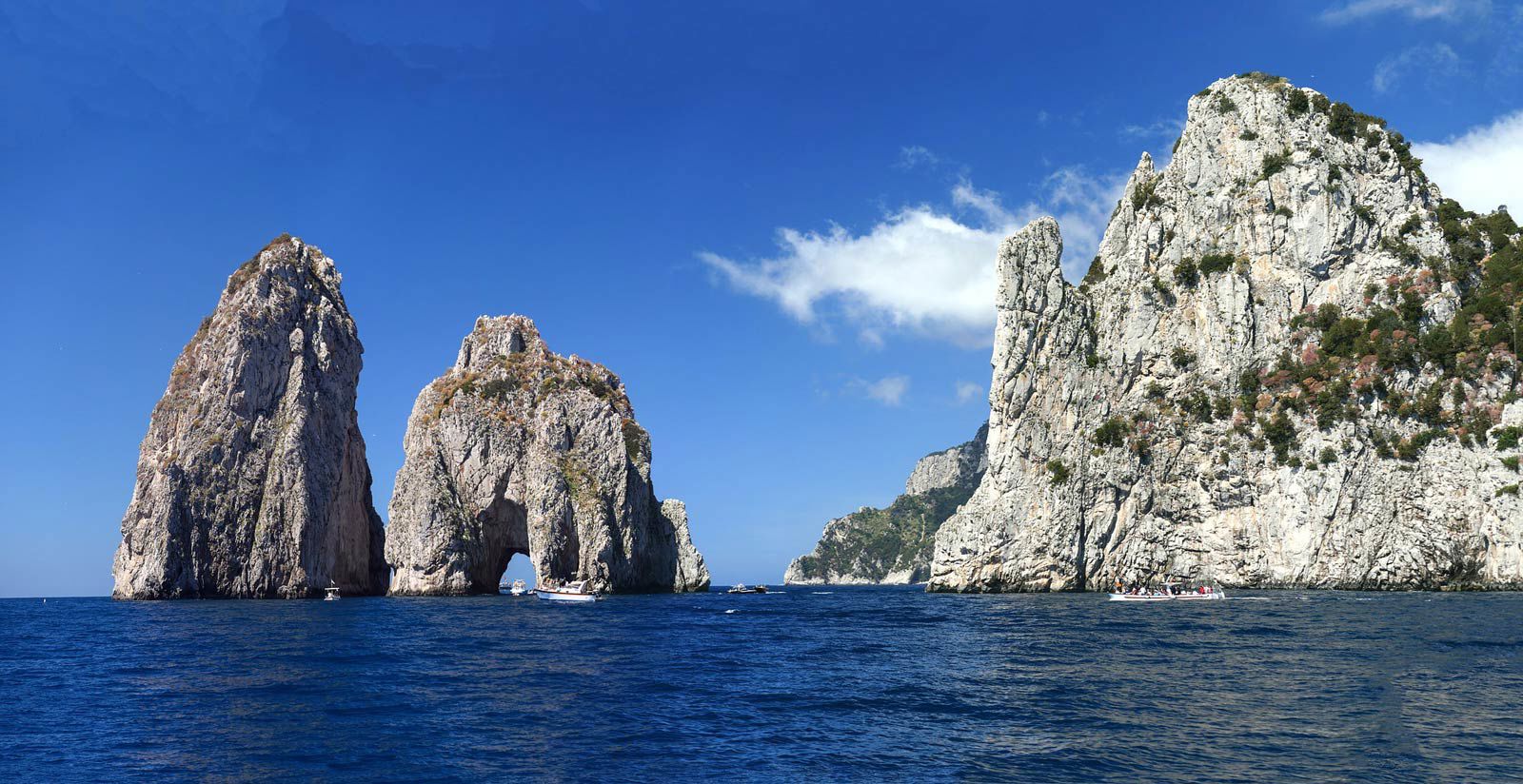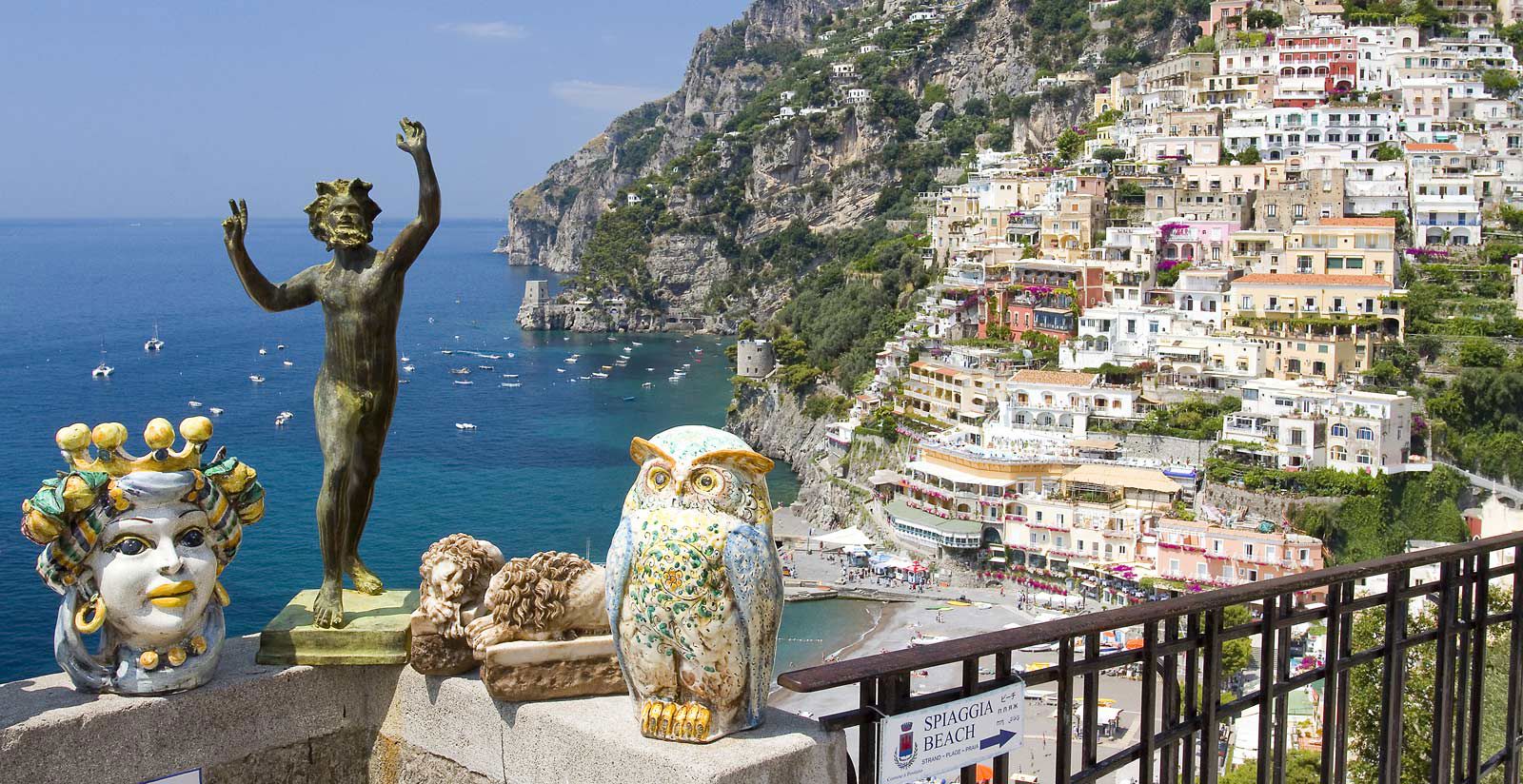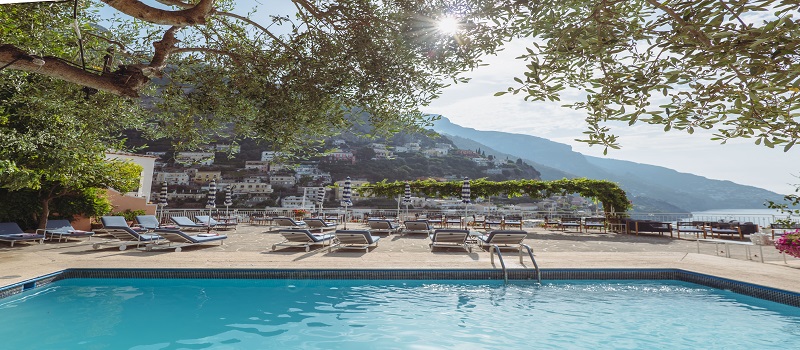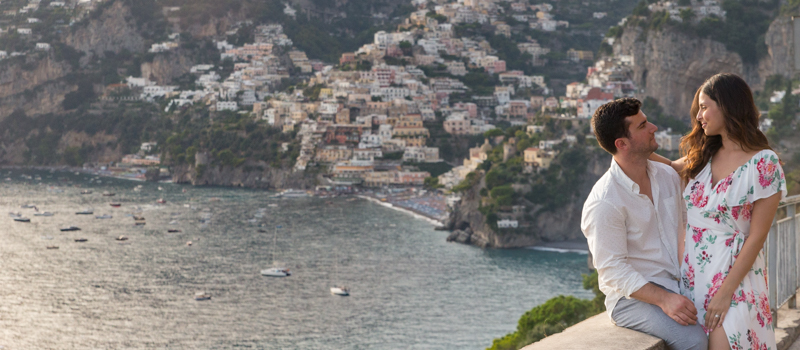Surroundings
Surroundings
CAPRI
This island has an unequalled natural beauty, archaelogically and artistically. Attracting an enormous amount of tourists all year round, it has been the international jet-setters’ playground for decades.
Renowned for its Blue Grotto, the Faraglioni rocks, its incomparable fauna and flora and the stupendous beauty of its scenery.
It can be easily reached by ferry from Positano (30 minutes).
RAVELLO
It's a small city of ancient origin perched among the hills, like a balcony overlooking the clear blue sea of the Gulf of Salerno.
The beauty of this place has inspired poets, painters and musicians.
Wagner stayed here and the magical charm of the Villa Rufolo prompted him to exclaim "I've found the garden of Klingsor".
The town of Ravello with its arches and antique towers against a splendid backdrop of clear skies and the sea, best captured in views such as the one from Villa Cimbrone and its "Terrace of Infinity" jealously conserves its artistic assets.
AMALFI
Amalfi is a small picturesque seaside resort within easy reach from Positano by boat or by car.
Originally Roman, it was the first Sea Republic of Italy.
Here you will find the incredible Duomo from the XI century, one of the most beautiful and famous in Italy and close by you can visit the extraordinary Emerald Grotto.
SORRENTO
Amidst the colours and noise of all the small towns fringing the Bay of Naples, Sorrento is a haven of peace and quiet immersed amongst its orange groves, parks and gardens, with walks leading to a translucent sea in a series of charming bays.
This small town is built on a cliff dropping sheer into the limpid blue of the sea and it looks across to Capri.
The Correale Museum is well worth a visit and it has a rich collection of furniture, paintings and porcelain.
POMPEI
The eruption of Vesuvius in 79 A.D. buried this town, a flourishing commercial centre with 20.000 inhabitants, under a deep mantle of pebbles, mud and ash.
It is a unique sensation to walk around Pompeii and imagine living as those people did in the past, seeing those bodies immortalized by the lava like a flash in a photograph.
HERCULANEUM
The town is smaller than Pompeii and was buried not by the lava from Vesuvius, but by volcanic mud which made the excavations much easier.
Unlike Pompeii, however, here the woodwork and furniture were preserved, so that the finds from the long excavations are extremely interesting for the information they give on the art, customs and way of life of the ancient Romans.
NAPLES
There must be some reason why men of every country - Goethe, Ibsen, Wagner - were drawn to Naples and celebrated its gulf.
The years pass, tastes and habits change but the age-old fascination of Naples remains. The history of Naples in every period is to be seen in its monuments, churches, palazzi, squares and streets. All testify to an intense cultural tradition and centuries of fascinating history.
VESUVIUS
This is the only active volcano on the mainland of Europe: at present dormant after the last disastrous eruption of 1944 when streams of lava poured down and showered Naples and surroundings towns.
From the top of the crater, the visitor has a breathtaking view of the two Gulfs of Naples and Salerno: a sight hardly equalled in any part of the world.
PAESTUM
Paestum was founded in the VI century B.C. by Greek settlers from Sybaris. Three magnificently preserved doric temples – Poseidon, Basilica and Cerere - can be visited.
It is one of the most representative tourist sites in the Magna Graecia and since the time of its discovery (1700) Paestum attracts more and more tourists and academics.
